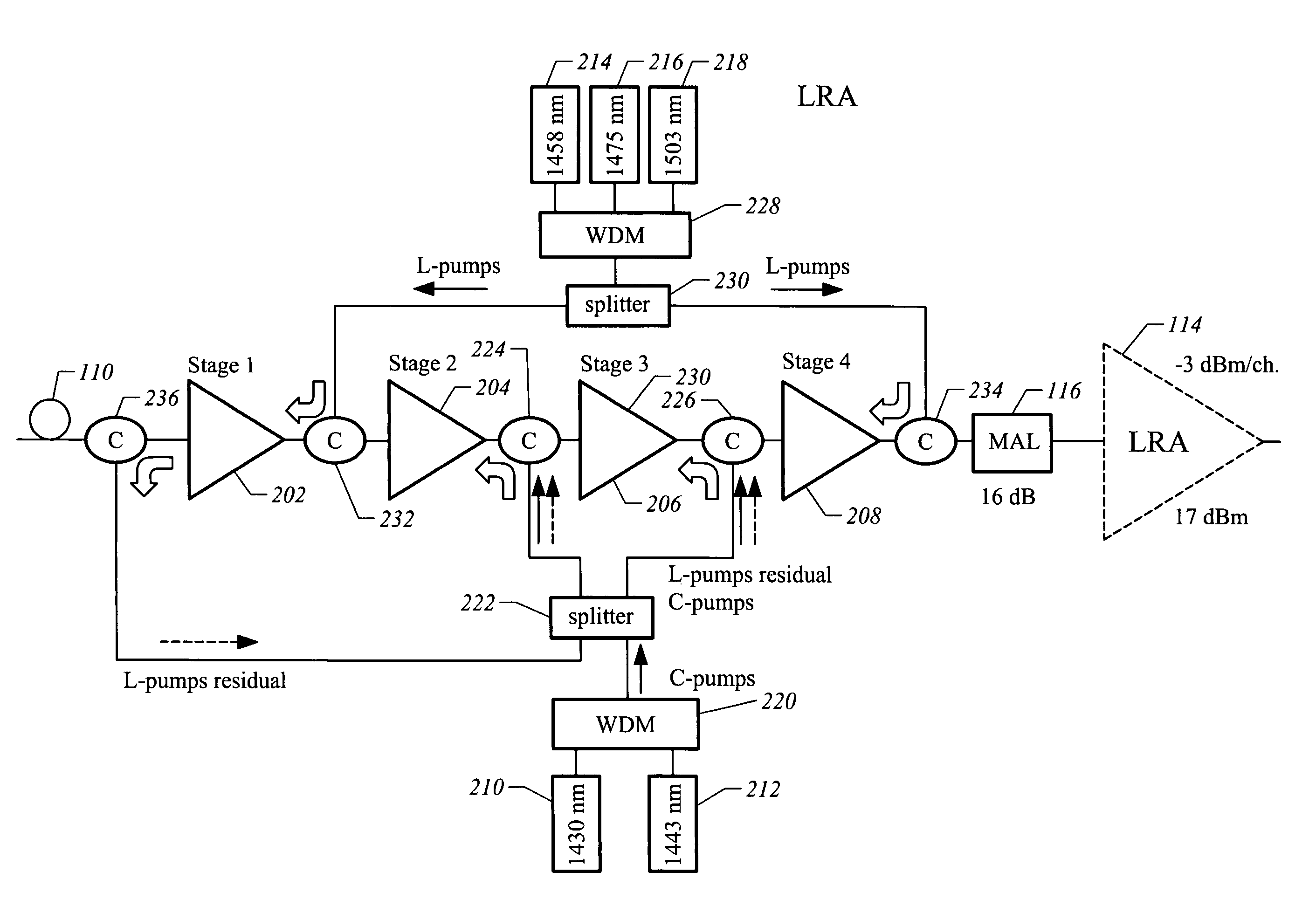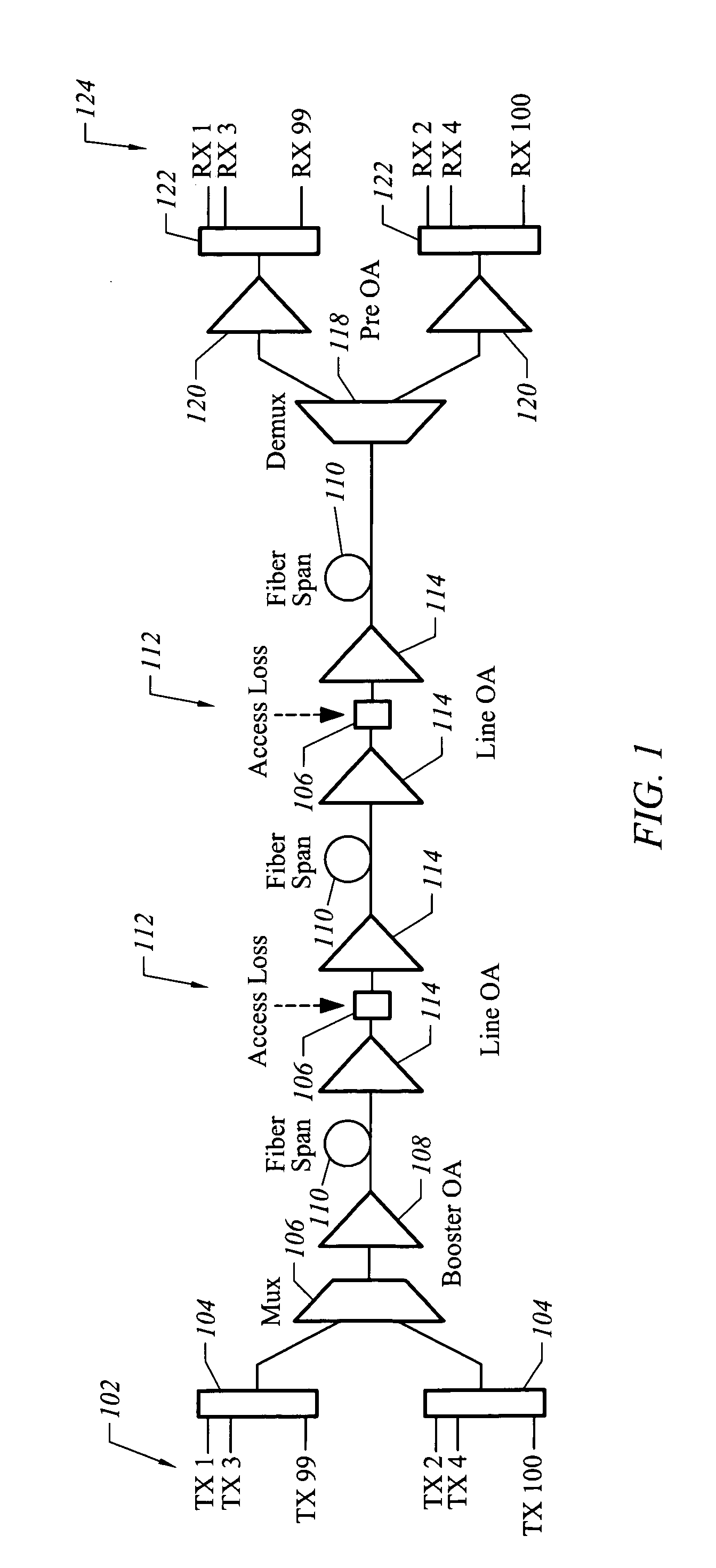Lumped Raman amplification structure for very wideband applications
- Summary
- Abstract
- Description
- Claims
- Application Information
AI Technical Summary
Benefits of technology
Problems solved by technology
Method used
Image
Examples
Embodiment Construction
[0018]The present invention will be described with reference to a representative optical wavelength division multiplexing (DWM) system architecture. In the representative architecture there are 100 channels or wavelengths spaced 100 GHz apart. The channels are found in the wavelength range of 1530 nm to 1610 nm. Each channel carries a 10 Gbps transmission. The optical signal to noise ratio (OSNR), at the receiver, should be greater than 14 dB over 0.5 nm bandwidth.
[0019]Single mode fiber (SMF) is used. The link consists of a transmitter site, a receiver site, a series of optical amplification sites, and a series of fiber spans between the sites. Some possible span configurations include seven spans of 14 dB loss (7×14) 5×20, 2×26, 1×31. In each case the amplifier sites provide gain to compensate for the losses of the preceding span. The overall maximum link length before regeneration of the optical signal from recovered data is considered in this example to be approximately 400 Km.
[...
PUM
 Login to View More
Login to View More Abstract
Description
Claims
Application Information
 Login to View More
Login to View More - R&D
- Intellectual Property
- Life Sciences
- Materials
- Tech Scout
- Unparalleled Data Quality
- Higher Quality Content
- 60% Fewer Hallucinations
Browse by: Latest US Patents, China's latest patents, Technical Efficacy Thesaurus, Application Domain, Technology Topic, Popular Technical Reports.
© 2025 PatSnap. All rights reserved.Legal|Privacy policy|Modern Slavery Act Transparency Statement|Sitemap|About US| Contact US: help@patsnap.com



